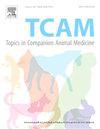Comparative Efficacy of Antihypertensive Drugs in Dogs: A Systematic Review
Abstract
Systemic arterial hypertension is a health condition causing target organ damage (TOD) in dogs. Early and effective treatment is essential to prevent hypertensive emergencies and to reduce the risk of TOD. This study investigated the diseases underlying hypertension and compared the short-term efficacy of antihypertensive drugs in dogs. We evaluated the medical records of client-owned dogs treated with antihypertensive drugs between 2017 and 2018. The study included 75 dogs diagnosed with systemic arterial hypertension (systolic blood pressure ≥150 mmHg). The dogs were classified based on treatment with the following antihypertensive drugs: calcium channel blocker amlodipine, angiotensin-converting enzyme inhibitor ramipril, and angiotensin receptor blocker telmisartan, either as monotherapy or combination therapy (telmisartan + amlodipine or ramipril + amlodipine). Systolic blood pressure was measured using an indirect Doppler method over 4 weeks. Naturally acquired hyperadrenocorticism was the most common disorder to be diagnosed in conjunction with systemic hypertension. In the telmisartan group, the systolic blood pressure decreased more rapidly for 3 weeks compared to ramipril. The combination of telmisartan and amlodipine showed the greatest decrease in systolic blood pressure throughout the 4-week treatment period. This study is meaningful as it suggests guidelines for the use of various antihypertensive drugs in dogs.

 求助内容:
求助内容: 应助结果提醒方式:
应助结果提醒方式:


